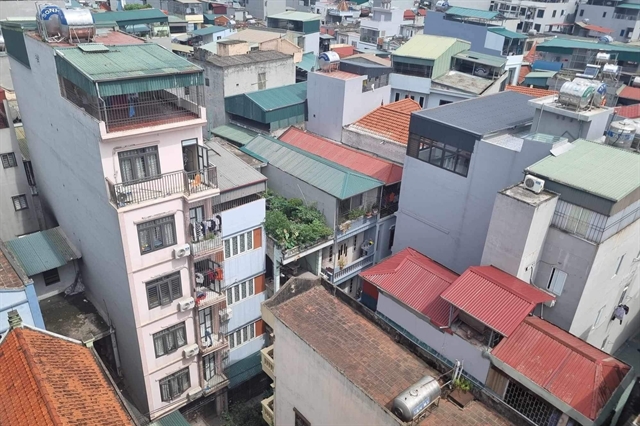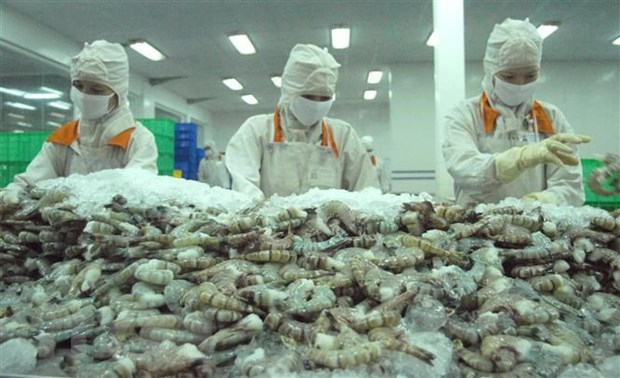 Business Beat
Business Beat

 |
| A view of a TPBank’s transaction office in Hà Nội. TPBank's total bad debts by the end of the second quarter of 2023 increased sharply by nearly three times compared to the beginning of this year to VNĐ3.91 trillion. VNA/VNS Photo |
Compiled by Thu Hà
HÀ NỘI — Total non-performing loans (NPLs) at many banks surged in the first half of this year due to the poor business performance of the whole economy, and experts forecast the trend will continue.
The latest financial statement of TPBank showed the bank's total NPLs by the end of the second quarter of 2023 increased by nearly three times compared to the beginning of this year to VNĐ3.91 trillion.
Of which, substandard debts increased 5.6 times to VNĐ2.14 trillion and doubtful debts also increased nearly 2.5 times to nearly VNĐ1.13 trillion. The ratio of NPLs to total outstanding loans of the bank increased sharply from 0.84 per cent at the beginning of this year to 2.21 per cent.
At BaoVietBank, the total NPLs as of June 30 was VNĐ1.75 trillion, up 58 per cent compared to the beginning of the year. Notably, BaoVietBank's potentially irrecoverable debts doubled to VNĐ1.52 trillion and doubtful debt also increased by 41 per cent to VNĐ154 billion, which caused the bank’s NPL ratio to increase from 3.34 per cent to 4.69 per cent.
Similarly, the total NPLs at ABBank also increased by 61 per cent compared to the beginning of this year to VNĐ3.82 trillion as of June 30, 2023. Therefore, the bank’s NPL ratio increased sharply to 4.55 per cent from 2.89 per cent earlier this year.
Not out of the trend, Bắc Á Bank recorded a bad debt increase of more than 32 per cent compared to the beginning of the year, to about VNĐ679 billion, mainly due to a sharp increase in sub-standard debts by 316 per cent to VNĐ175 billion. The ratio of NPLs to total outstanding loans of the bank increased significantly to 0.7 per cent if compared to the rate of 0.55 per cent at the beginning of this year.
As one of the first banks to publish H1 2023 financial statements, LPBank recorded an 80 per cent rise of potentially irrecoverable debts after the first half of this year to VNĐ2.43 trillion, which pushed the bank’s total NPLs to surge by 65 per cent to VNĐ5.65 trillion.
At PGBank, NPLs after the first half of this year also increased by nearly 12.7 per cent, lifting the bank’s bad debt ratio to 2.77 per cent by the end of June 2023.
Techcombank also recorded a bad debt increase in the period, though it also gained many bright spots in business performance, such as high profit and CASA (current account savings account) improvement in H1.
The bank’s NPL ratio inched up from 0.9 per cent at the end of 2022 to 1.07 per cent at the end of the second quarter of 2023, while the bad debt coverage ratio decreased from 125 per cent at the end of last year to 115.8 per cent.
For State-owned commercial banks, although they have not officially announced their financial statements, their business performance results in the first half of 2023 have been revealed partly.
VietinBank’s deputy general director Nguyễn Hoàng Dũng said the bad debt ratio was controlled at 1.1 per cent and met the bank’s plan, while the NPL coverage ratio also continued to remain high at 170 per cent.
At Vietcombank, general director Nguyễn Thanh Tùng revealed by the end of June 2023, the bank’s credit quality was controlled with a bad debt ratio at 0.85 per cent. Although the ratio was the lowest level in the country’s banking system, it increased compared to Vietcombank's rate of 0.68 per cent at the end of 2022.
As for Agribank, the bad debt ratio increased again due to domestic and global economic headwinds though it reduced from 8.1 per cent to 1.86 per cent after restructuring in the 2016-20 period.
Phạm Đức Ấn, chairman of Agribank's board of members, said Agribank's bad debt ratio as of June 30, 2023 increased to exactly the same as the end of the restructuring in the 2016-20 period, and the ratio is under rising pressure in the coming time.
Having faced the fact that bad debts are getting bigger and bigger, banks have aggressively auctioned to sell collateral to recover the debts, but the work is not easy.
For example, at Vietcombank, the collateral of an Evergreen Technology Company’s debt, including land use rights and machinery systems, at the bank has been put up for auction many times over the past year but has not found buyers, though the price dropped by more than VNĐ300 billion compared to the initial price.
Nguyễn Quốc Hùng, general secretary of the Việt Nam Banks Association, said the debt recovery has faced many difficulties, such as the frozen real estate market.
According to experts, this is not the peak of bad debt because payment of many debts are still reschedued according to a circular by the State Bank of Vietnam.
When the circular expires on June 30 next year, the actual number of bad debts must be higher.
Banking expert Dr. Cấn Văn Lực said the increase in bad debt is a common trend of the world in the current difficult context. Though bad debts increase compared to 2022, it is still under control. In order to reduce the burden of rising bad debts in the future, banks are still actively setting up provisions for higher risk cases.
According to Lực, Circular 02/2023/TT-NHNN from SBV requires banks to make provisions for risky debts to ensure that they will be still settled even in the worst scenarios.
Though the bad debt coverage ratio out of the total outstanding loans of the economy is currently at 135 per cent, not as high as a few years ago, it is still an important resource for banks to handle bad debts. — VNS


.jpg)

